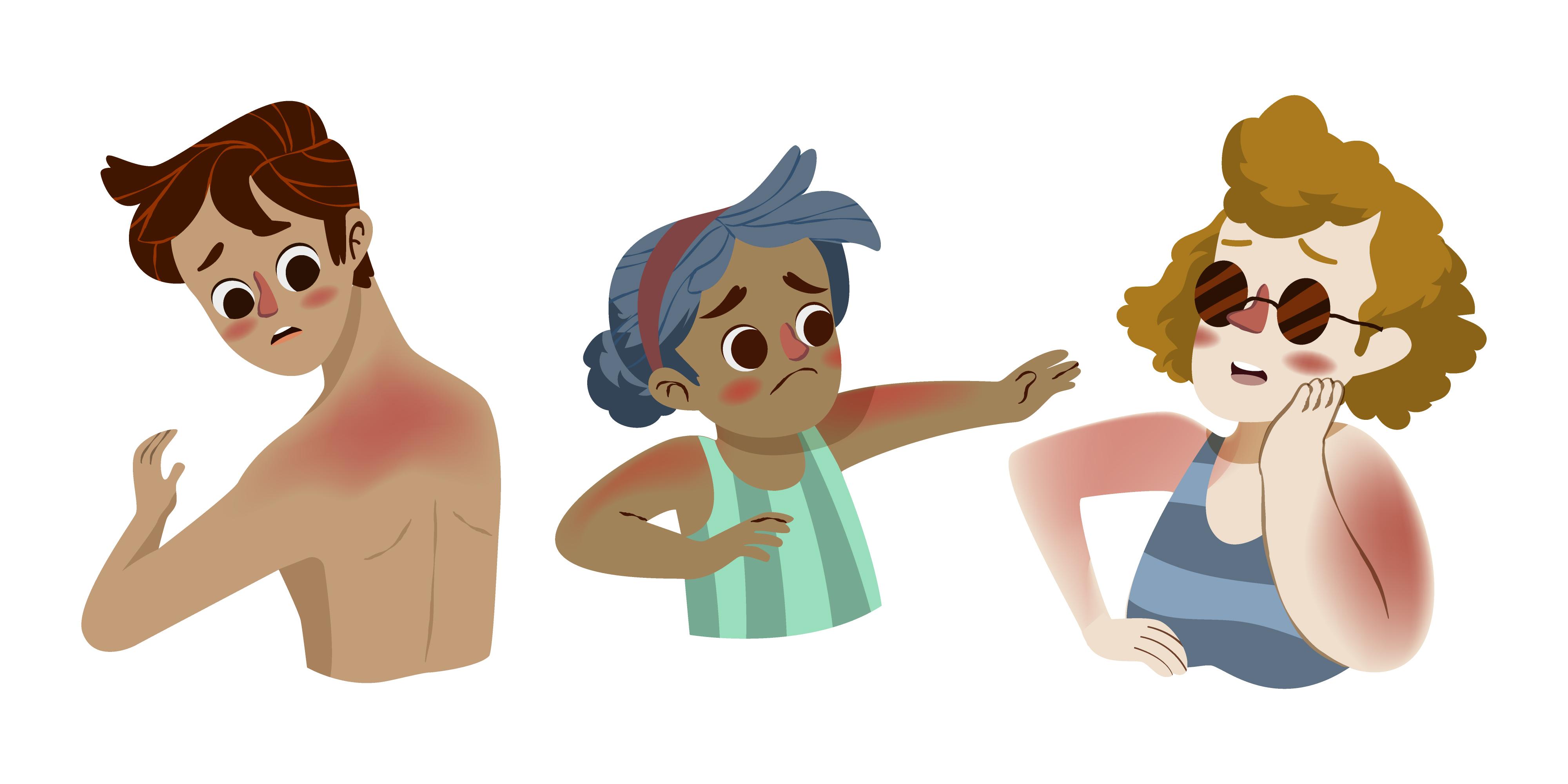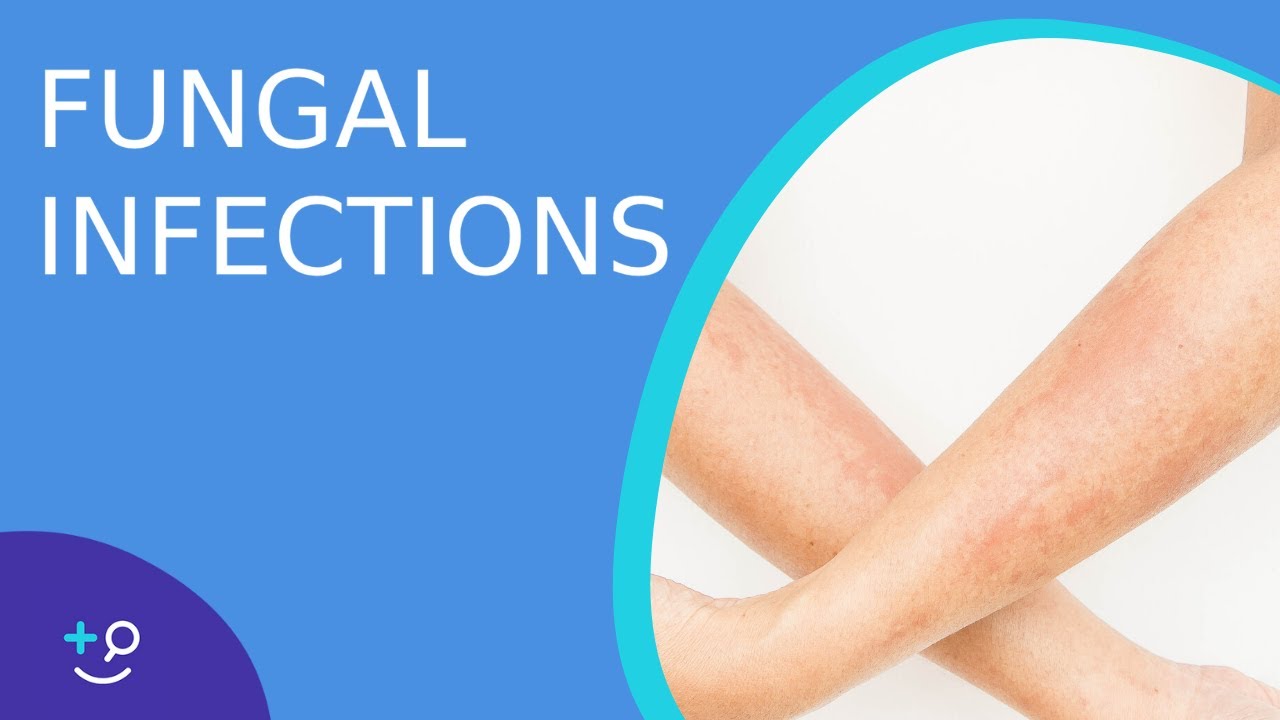Skin Fungus Infection - Treatment And Prevention Strategies For Effective Management
A skin fungus infection is a skin disease caused by a fungus. Rashes are a typical symptom of mild fungal infections of the skin. For instance, the skin ailment known as ringworm is really caused by a fungus and not a worm.
Author:Suleman ShahReviewer:Han JuJan 26, 202355.1K Shares1.4M Views

A skin fungus infectionis a skin disease caused by a fungus. Rashes are a typical symptom of mild fungal infections of the skin. For instance, the skin ailment known as ringworm is really caused by a fungus and not a worm.
Lung fungal infections may be rather dangerous, and their symptoms are frequently difficult to distinguish from those of other diseases such bacterial pneumonia or TB.
Fungi may be found just about everywhere. The naked eye can't always detect them because of how little they are. Outdoors, fungi thrive in soil and on plants; inside, they flourish in the air and on surfaces; and in humans, they colonize the skin and internal organs. Only a small fraction of the million or so known fungus species really pose a healthrisk to humans.
The time it takes to arrive at the accurate diagnosis may significantly impact the quality of care a patient receives. Meningitis and other fungal infections of the central nervous system are far less prevalent than those of the skin and lungs, yet they may be fatal if left untreated. One's health may be better protected if one is aware of the potential for fungal infections and the factors that increase one's risk of contracting one.
What Is Skin Fungus Infection?
A skin fungus infection, commonly known as mycosis, is a fungus-caused skin illness. Fungi exist in millions of species. They inhabit the soil, plants, domestic surfaces, and human skin. Occasionally, they might cause skin issues such as rashes or pimples.
A fungal infection of the skin may produce irritation, scaling, redness, itching, swelling, and blisters. Fungus-related skin infections may occur everywhere on the body. The most prevalent are athlete's foot, jock itch, ringworm, and yeast infections.
Mild fungal skin infections may resemble a rash and are quite prevalent. Ringworm, for instance, is a skin ailment caused by a fungus and not a worm. Lung infections caused by fungi may be more severe and can induce symptoms similar to those of other diseases, such as bacterial pneumonia and TB.
Finding the accurate diagnosis may be challenging and result in delays in receiving the appropriate therapy. Meningitis and bloodstream infections caused by fungi are less prevalent than skin and lung infections, but they may be fatal.
The more your knowledge about fungal diseases and your likelihood of contracting one, the more effectively you can safeguard your health.

Fungal Infections - Causes, Prevention and Cure
How To Cure Fungal Infection On Skin Naturally
Yoghurt and Probiotics:Yoghurt and other probiotics provide plenty of beneficial bacteria that fight fungal diseases. These tackle infection-causing bacteria. Fermented foods include probiotics also. If they don't work, try probiotics with additional healthy bacteria.
Soap and water: Before using home remedies or other medications, wash the afflicted region twice daily with soap and water. This prevents infection. Soap and water reduces fungal infection spread and intensity.
Apple Cider Vinegar: Antifungal apple cider vinegar. Two teaspoons in warm water may be drunk or used on your skin using a cotton ball. This three times a day should work.
Tea-Tree Oil: Tea tree oil is naturally antifungal and antibacterial. Mix it with coconut or olive oil and dab it on the diseased region three to four times a day. One of the best home treatments for fungal diseases.
Coconut Oil: Coconut oil is antifungal even warmed. Topical use makes it safe and effective. It treats scalp ringworm since it's gentle. Use three times daily on skin.
Turmeric: Antimicrobial and anti-inflammatory turmeric. Mix with water and apply. Mix with warm water or drink turmeric tea for internal benefits. Turmeric is in many Indian cuisines, making this one of the simplest fungal infection cures.
Aloe Vera: Aloe vera is a tried-and-true skin illness remedy. It heals skin and fights infection. Aloe vera improves skin and face.
Garlic: Garlic is highly antifungal and antimicrobial. Garlic eaters avoid fungal diseases. Make a paste from two garlic cloves and olive oil. Apply for 30 minutes. See garlic's health advantages.
Oregano Oil: Oregano oil is also antifungal. Apply with a carrier oil. Oregano pills may be swallowed. Use these treatments consistently to get results. Check for essential oil sensitivities before using.
Neem: Antifungal neem leaves are great for skin. Neem water treats fungal diseases. Boiled neem leaves create neem water.
Vitamin-C-rich foods: Ascorbic acid (vitamin C) promotes immunity. It prevents infections. A strong immune system speeds fungal infection treatment.
Baking Soda: Baking soda helps athlete's foot. Baking soda powder on feet and shoes absorbs perspiration. It inhibits infection.
Hydrogen Peroxide: Hydrogen peroxide treats athlete's foot. Athletes' foot may be cured by soaking our feet in water and hydrogen peroxide.
Ginger: Ginger's antimicrobial gingerol. Ginger tea may prevent and cure fungal illnesses like Candida.
Honey: Honey contains hydrogen peroxide, which kills fungus and bacteria that cause skin infections, making it an easy home remedy for fungal infections. Raw honey has healing powers and is the greatest treatment.
Grapefruit Seed Extract: Research shows grapefruit seed extract may cure fungal infections. Mix a drop of seed extract with a few drops of water and apply to the afflicted area twice a day.
Licorice powder: Licorice's anti-inflammatory and anti-microbial qualities make it ideal for fungal infections. Add powdered licorice to a cup of water and boil. Simmer for several minutes. After cooling, apply the paste to the afflicted skin twice a day.
Lemongrass oil: As a home remedy for fungal injections, lemongrass has anti-microbial effects. Mix lemongrass oil with a carrier oil and dab it on the afflicted area twice a day with a cotton ball or swab!
Homeopathy To Treat Skin Fungus Infection
Homeopathic therapy for skin disorders regulates the disease and gives long-term relief by addressing the underlying cause of the problem in order to create a lasting remedy. Homeopathic therapy is trustworthy, effective, and has no adverse effects.
There are several methods in which homeopathy may cure a skin fungal infection. Using a homeopathic medicine that is particular to the fungus causing the illness is one of the most prevalent methods. A second method homeopathy may be effective is through activating the body's immune system to combat the illness.
Thuja Occidentalis is one of the most used homeopathic treatments for cutaneous fungal infections. This medicine is often used to treat infections caused by candida or other fungus. Borax, a traditional treatment for infections caused by Trichophyton or Epidermophyton fungus, is another frequent therapy.
Additionally, homeopathy may function by activating the body's immune system to combat the illness. Medications containing chemicals known to activate the immune system, such as Echinacea or Baptisia Tinctoria, are used for this purpose.
How To Prevent Skin Fungus Infection
Consider the following suggestions to avoid the development of a fungal skin infection:
- Be careful to observe proper hygiene.
- Share neither garments nor other personal stuff.
- Always wear clean clothing, especially socks and underwear.
- Choose clothes and footwear that are breathable. Avoid clothes and footwear with a too-tight or restricting fit.
- After showering, bathing, or swimming, be sure to thoroughly dry off with a clean, dry towel.
- Wear sandals or flip-flops instead than strolling barefoot in locker rooms.
- Clean common areas, such as gym equipment and mats.
- Avoid animals who exhibit symptoms of a fungal illness, such as lost hair or excessive scratching.
People Also Ask
How Do You Prevent Fungal Skin Infections?
Be careful to observe proper hygiene. Share neither garments nor other personal stuff. Always wear clean clothing, especially socks and underwear.
What Kills Fungal Skin Infection?
Antifungal drugs effectively cure fungal infections. They may either kill fungus directly or inhibit their growth and proliferation. Antifungal medicines are available over-the-counter (OTC) or by prescription, and come in a number of forms, including lotions and ointments.
How Do You Remove Fungus From Skin?
Typically, antifungal medicines are used to treat fungal infections, and they are often given directly to the diseased region (called topical drugs). Creams, gels, lotions, solutions, and shampoos are all examples of topical medications. Antifungal medications may also be used orally.
Final Words
Skin fungus infection is frequent. Despite the fact that these infections are often not life-threatening, they may cause pain and irritation owing to itchy or scaly red skin. The rash may spread or become more irritating if left untreated.
The treatment's duration of effect might vary from patient to patient. Typically, it takes many days to weeks to clear up. However, the fungal infection may return. Discuss with your healthcare professional preventative measures you may take to avoid reinfection.

Suleman Shah
Author
Suleman Shah is a researcher and freelance writer. As a researcher, he has worked with MNS University of Agriculture, Multan (Pakistan) and Texas A & M University (USA). He regularly writes science articles and blogs for science news website immersse.com and open access publishers OA Publishing London and Scientific Times. He loves to keep himself updated on scientific developments and convert these developments into everyday language to update the readers about the developments in the scientific era. His primary research focus is Plant sciences, and he contributed to this field by publishing his research in scientific journals and presenting his work at many Conferences.
Shah graduated from the University of Agriculture Faisalabad (Pakistan) and started his professional carrier with Jaffer Agro Services and later with the Agriculture Department of the Government of Pakistan. His research interest compelled and attracted him to proceed with his carrier in Plant sciences research. So, he started his Ph.D. in Soil Science at MNS University of Agriculture Multan (Pakistan). Later, he started working as a visiting scholar with Texas A&M University (USA).
Shah’s experience with big Open Excess publishers like Springers, Frontiers, MDPI, etc., testified to his belief in Open Access as a barrier-removing mechanism between researchers and the readers of their research. Shah believes that Open Access is revolutionizing the publication process and benefitting research in all fields.

Han Ju
Reviewer
Hello! I'm Han Ju, the heart behind World Wide Journals. My life is a unique tapestry woven from the threads of news, spirituality, and science, enriched by melodies from my guitar. Raised amidst tales of the ancient and the arcane, I developed a keen eye for the stories that truly matter. Through my work, I seek to bridge the seen with the unseen, marrying the rigor of science with the depth of spirituality.
Each article at World Wide Journals is a piece of this ongoing quest, blending analysis with personal reflection. Whether exploring quantum frontiers or strumming chords under the stars, my aim is to inspire and provoke thought, inviting you into a world where every discovery is a note in the grand symphony of existence.
Welcome aboard this journey of insight and exploration, where curiosity leads and music guides.
Latest Articles
Popular Articles